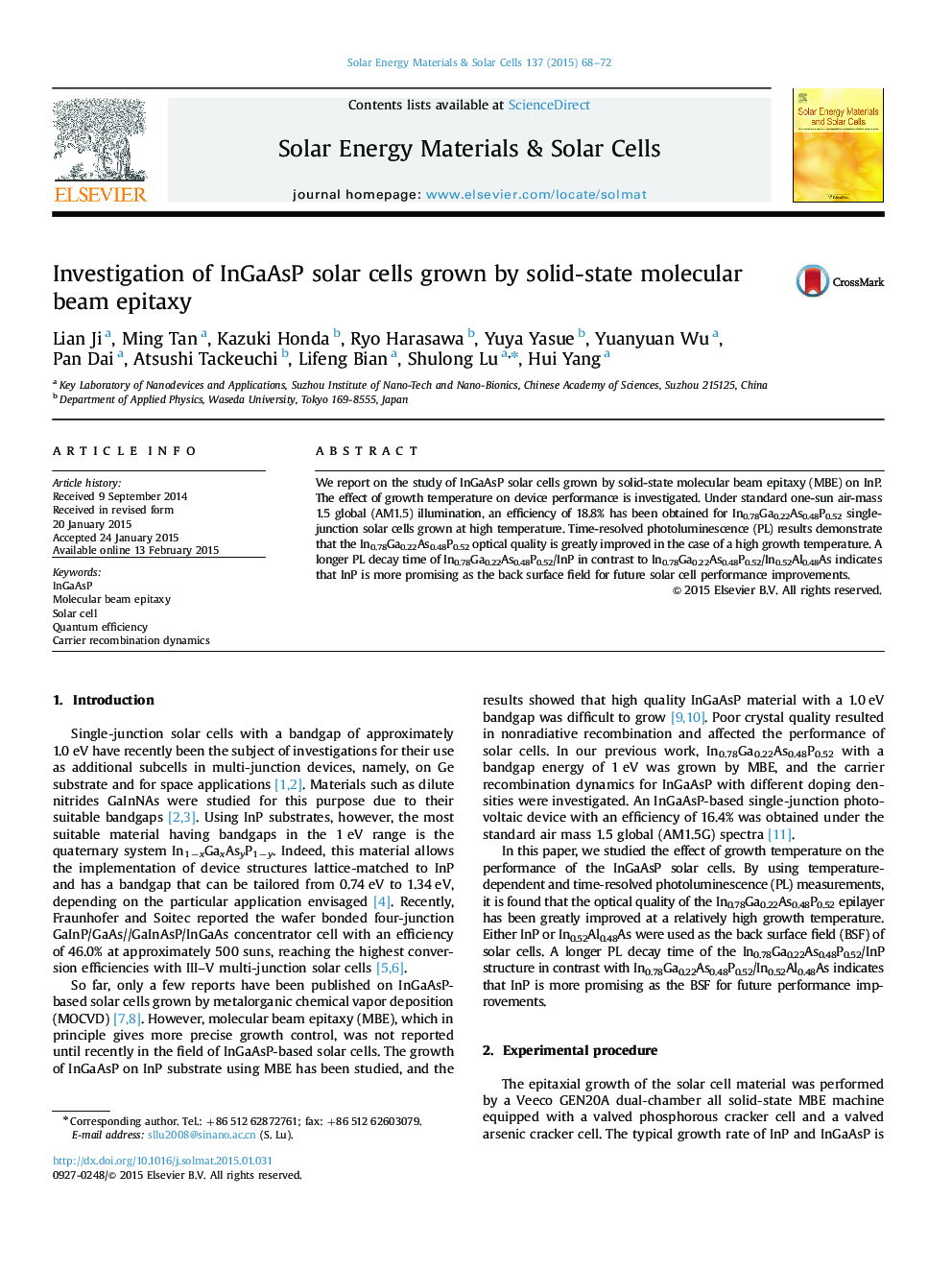| Article ID | Journal | Published Year | Pages | File Type |
|---|---|---|---|---|
| 77850 | Solar Energy Materials and Solar Cells | 2015 | 5 Pages |
•InGaAsP solar cells grown by molecular beam epitaxy is investigated.•A high solar cell performance is obtained at a relatively high growth temperature.•Higher growth temperature leads to longer minority carrier lifetime in InGaAsP.•The influence of growth temperature is attributed to miscibility gap in InGaAsP.•InP is more promising as the back surface field layer compared with InAlAs.
We report on the study of InGaAsP solar cells grown by solid-state molecular beam epitaxy (MBE) on InP. The effect of growth temperature on device performance is investigated. Under standard one-sun air-mass 1.5 global (AM1.5) illumination, an efficiency of 18.8% has been obtained for In0.78Ga0.22As0.48P0.52 single-junction solar cells grown at high temperature. Time-resolved photoluminescence (PL) results demonstrate that the In0.78Ga0.22As0.48P0.52 optical quality is greatly improved in the case of a high growth temperature. A longer PL decay time of In0.78Ga0.22As0.48P0.52/InP in contrast to In0.78Ga0.22As0.48P0.52/In0.52Al0.48As indicates that InP is more promising as the back surface field for future solar cell performance improvements.
